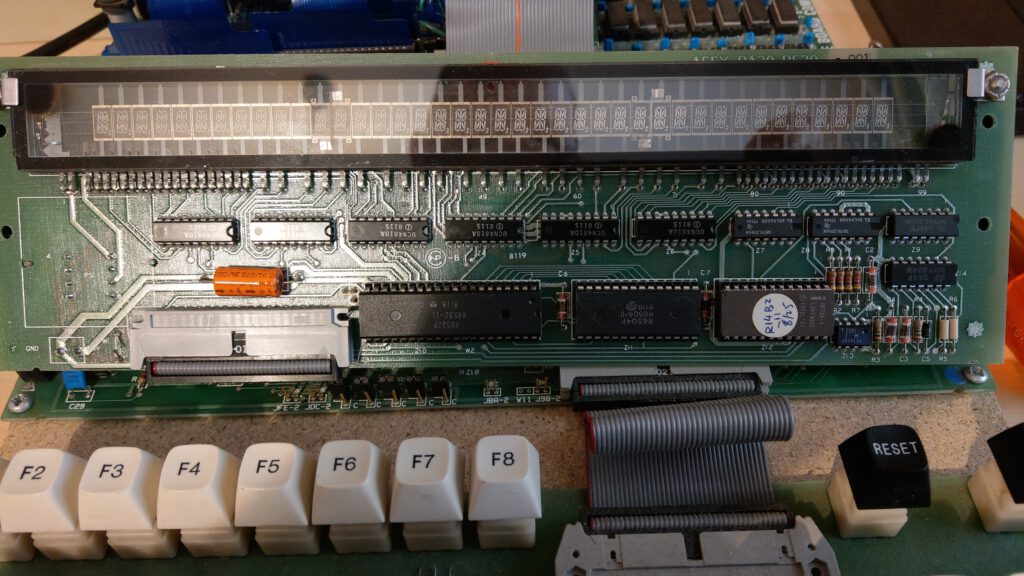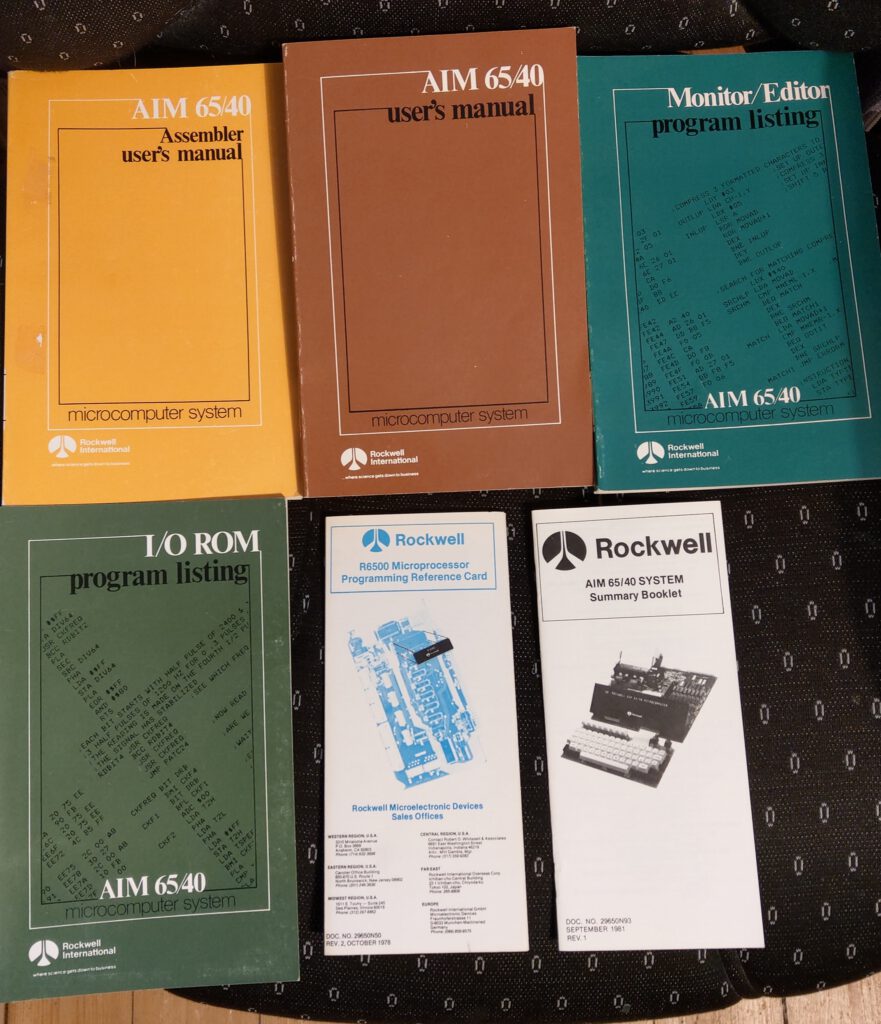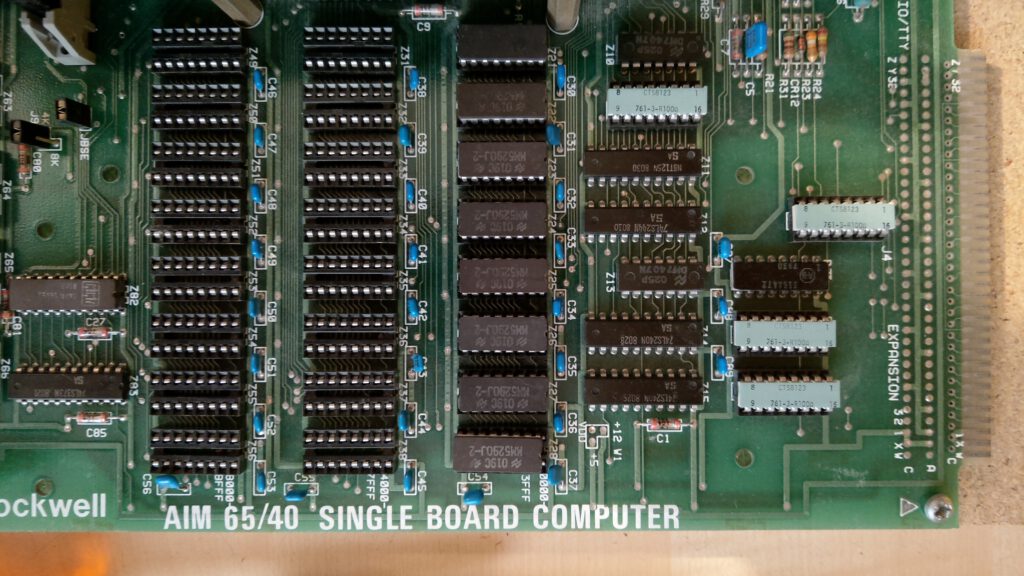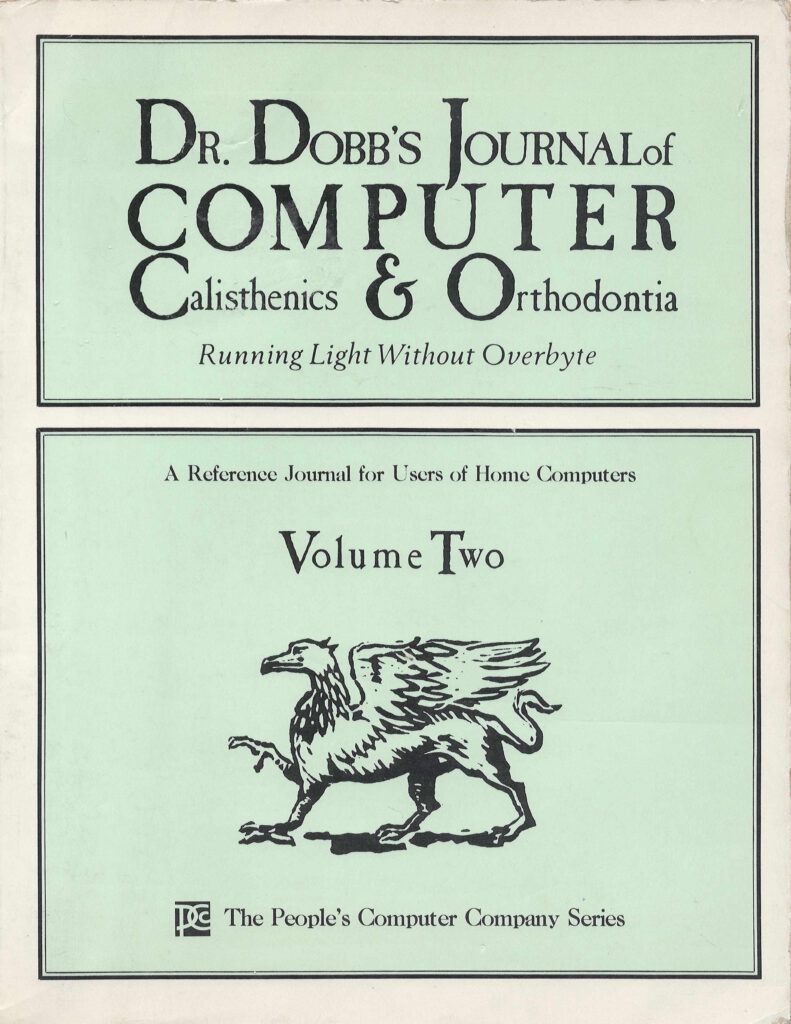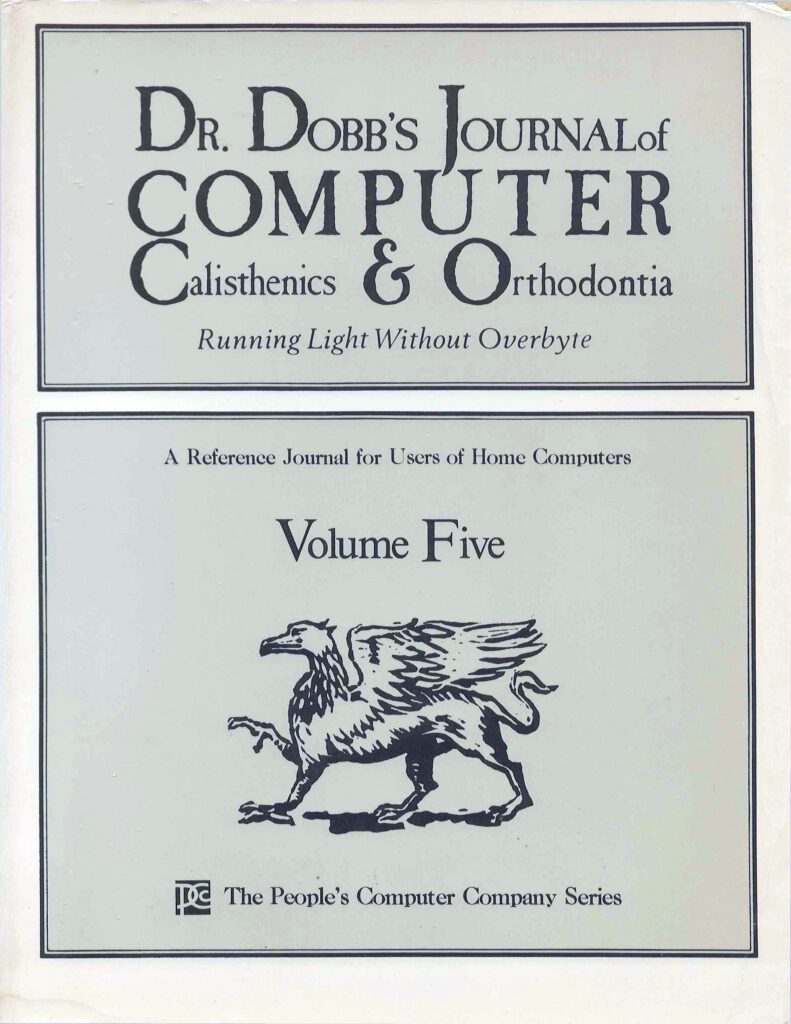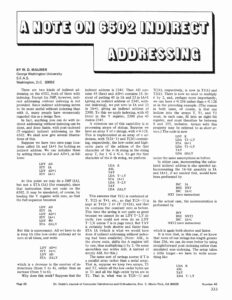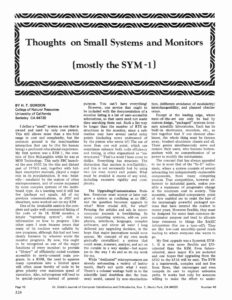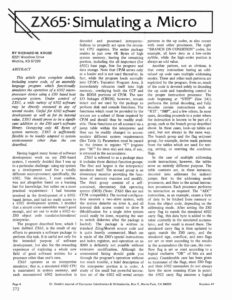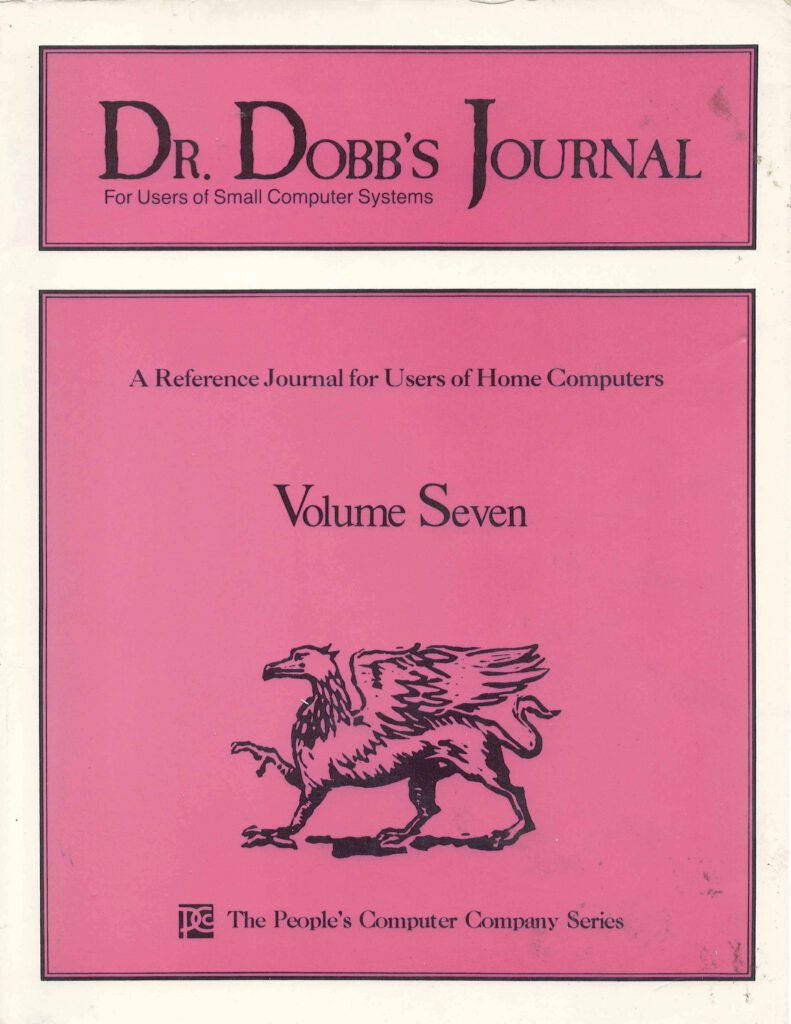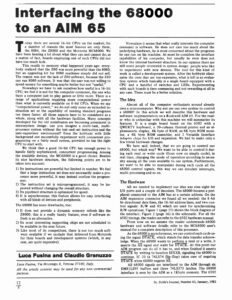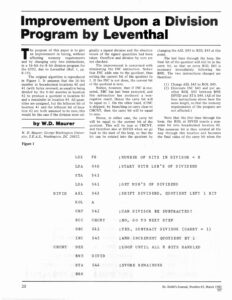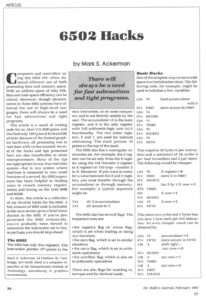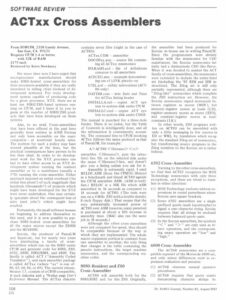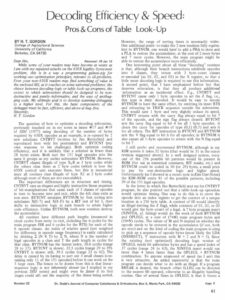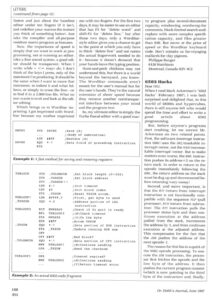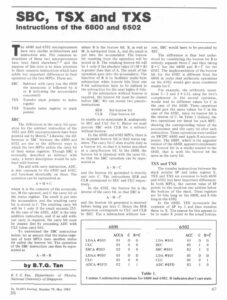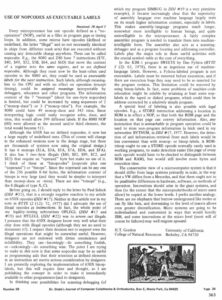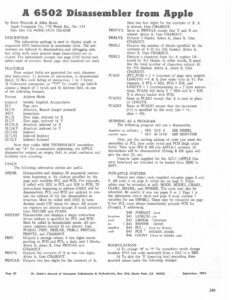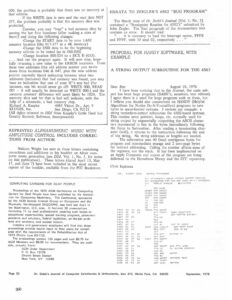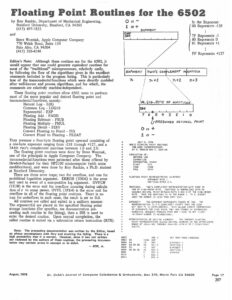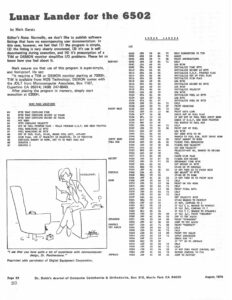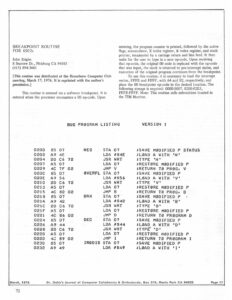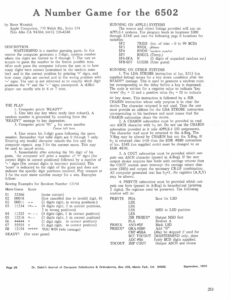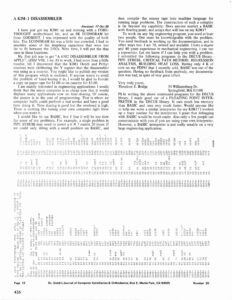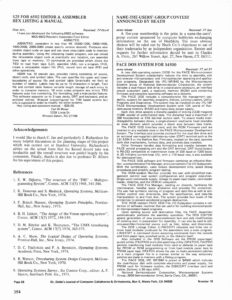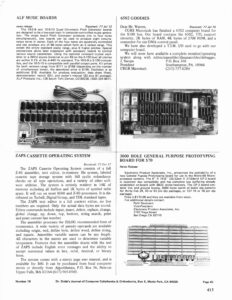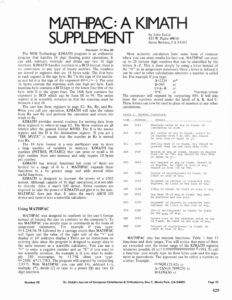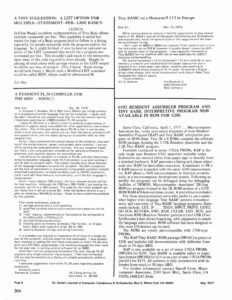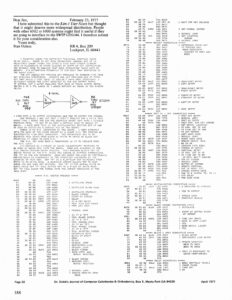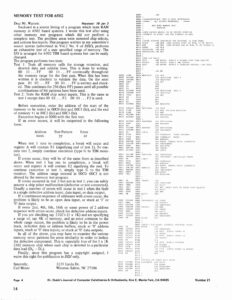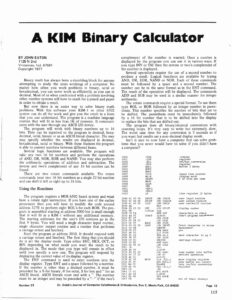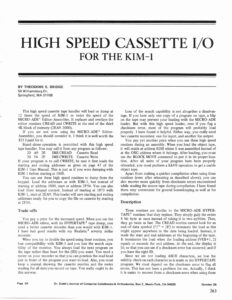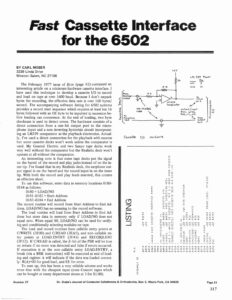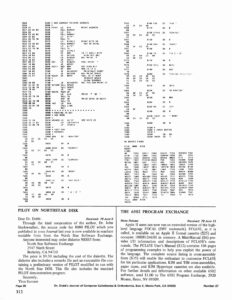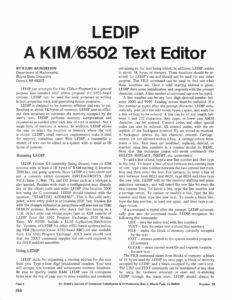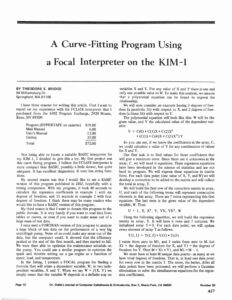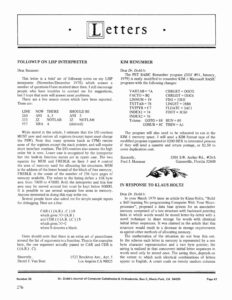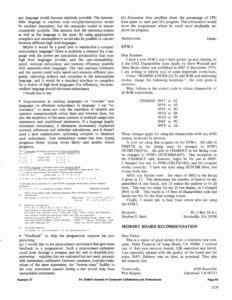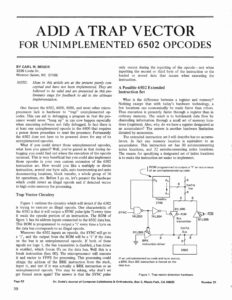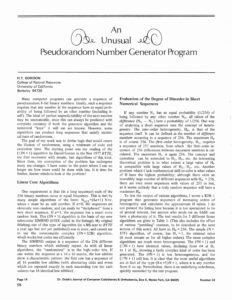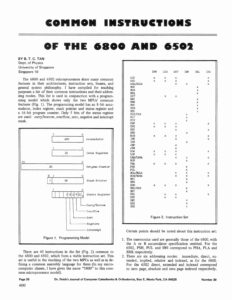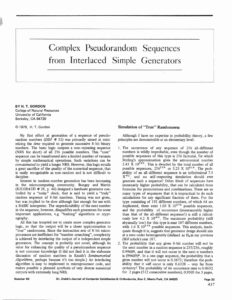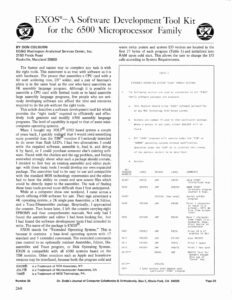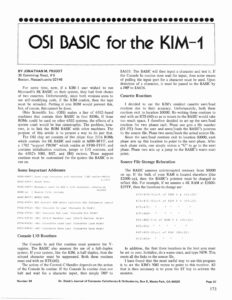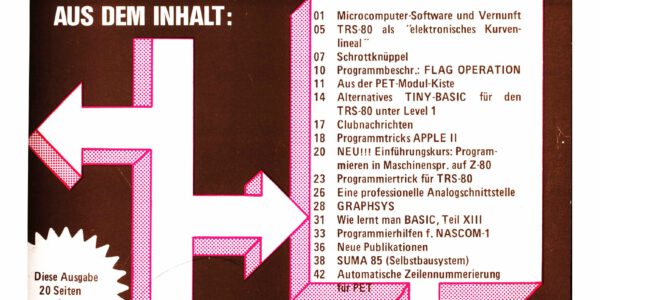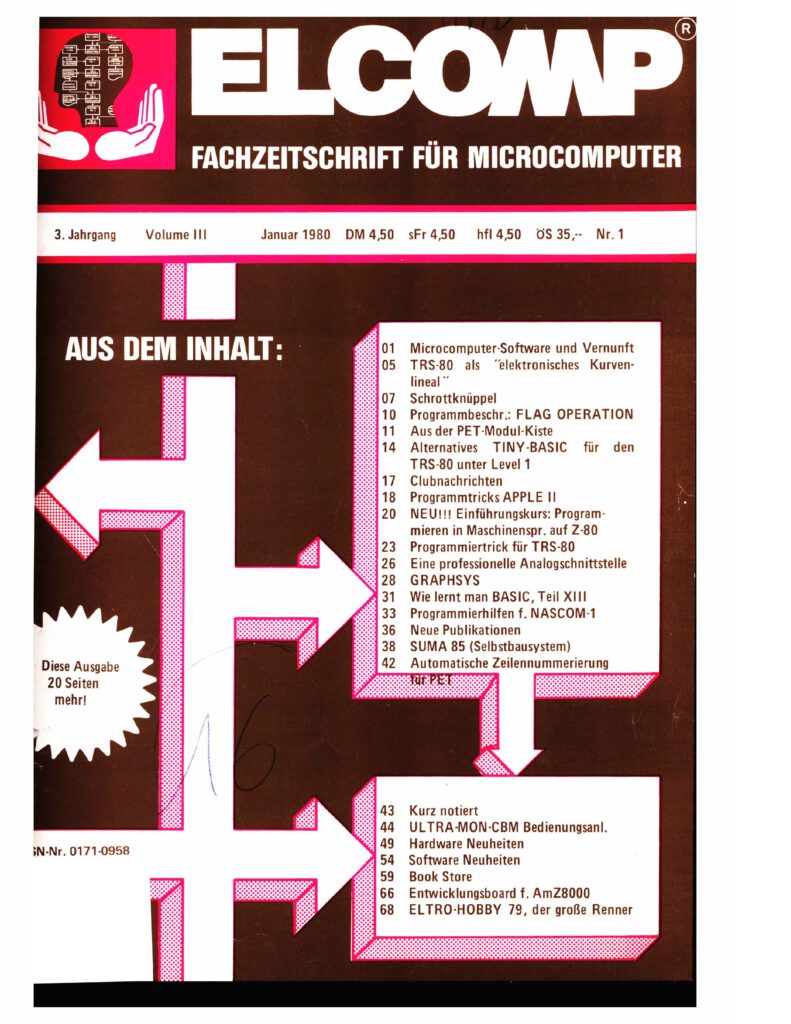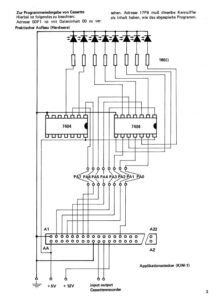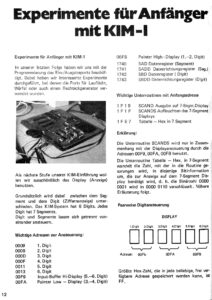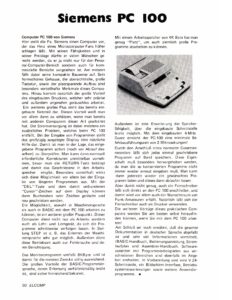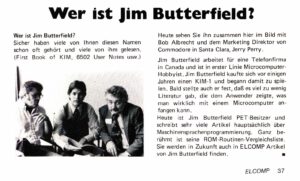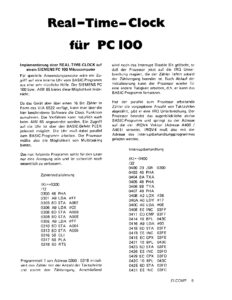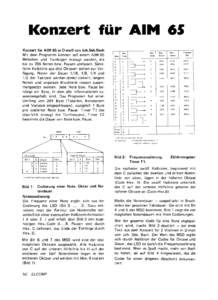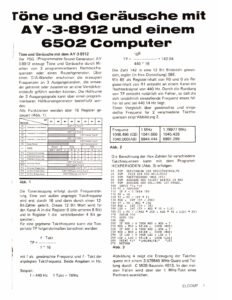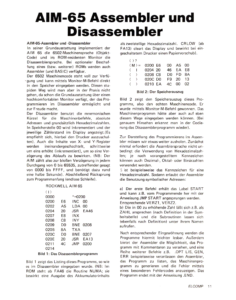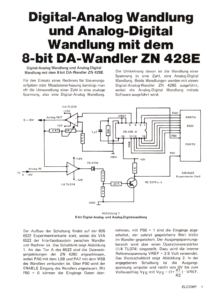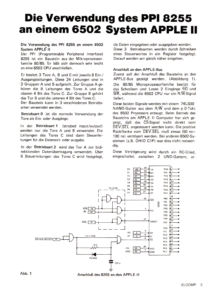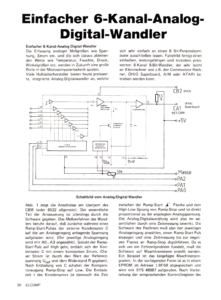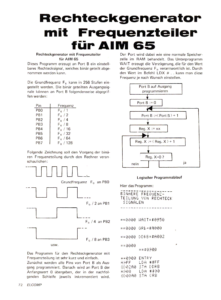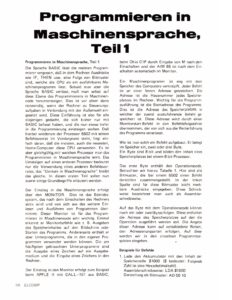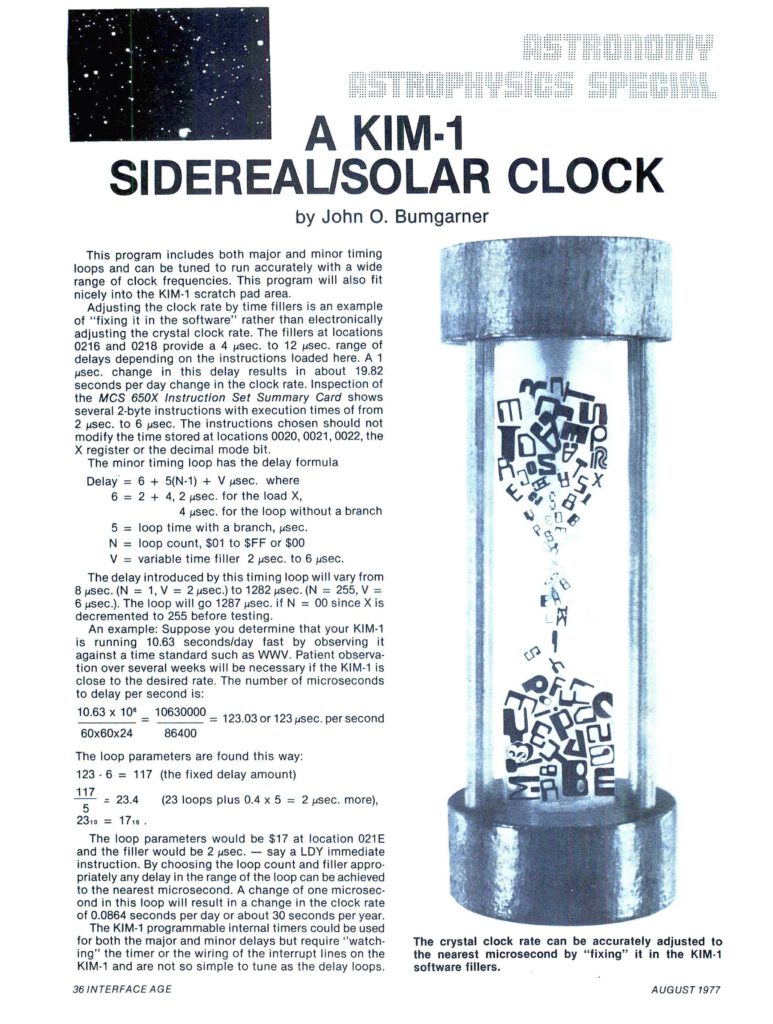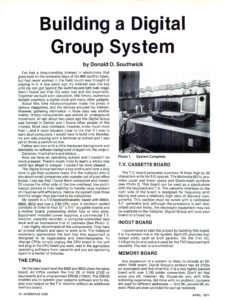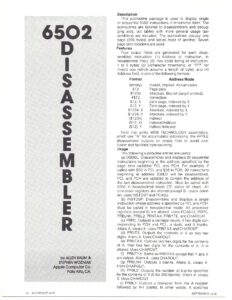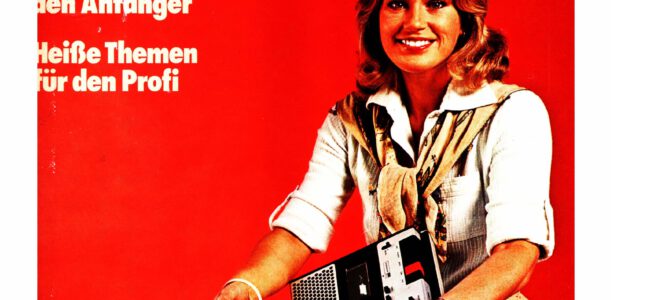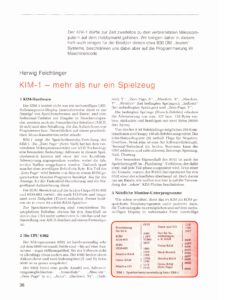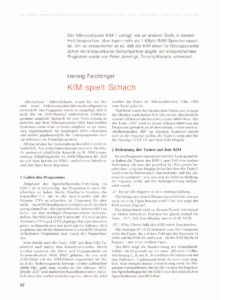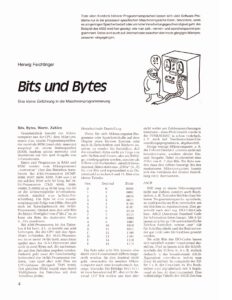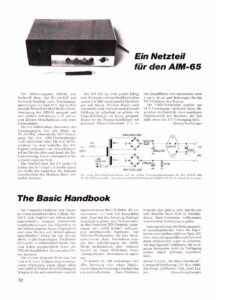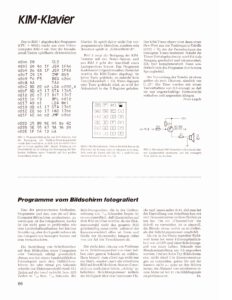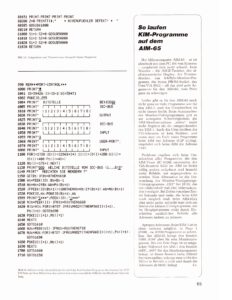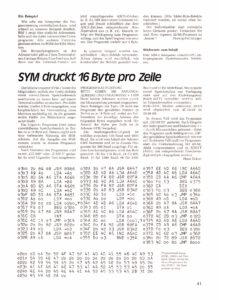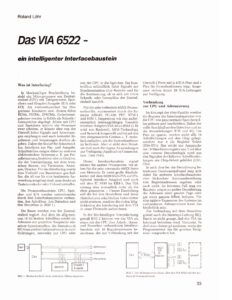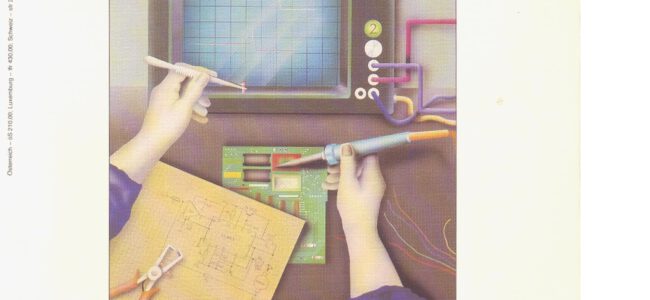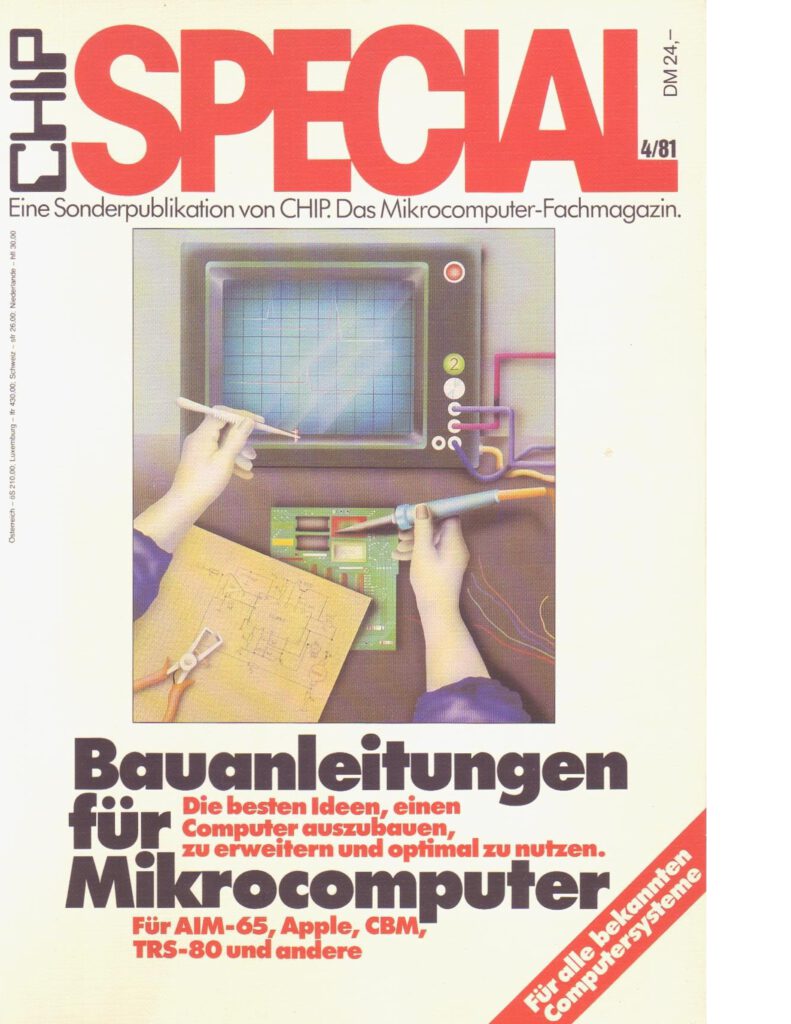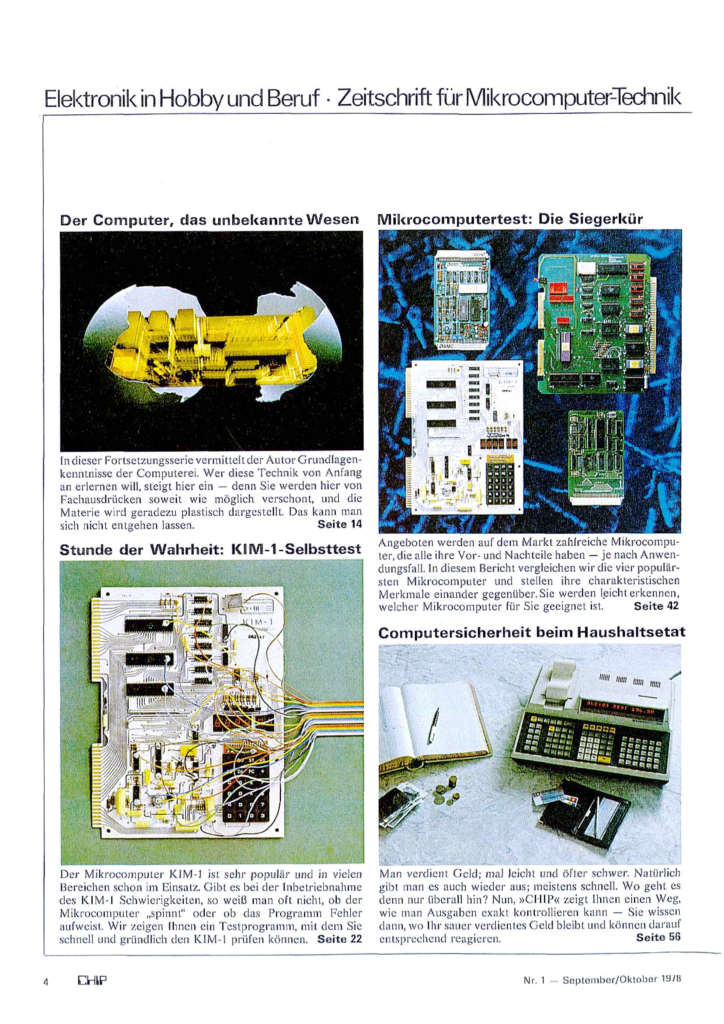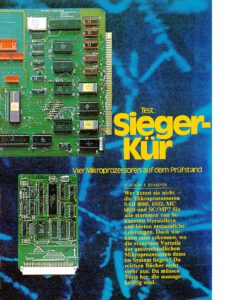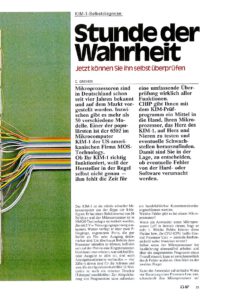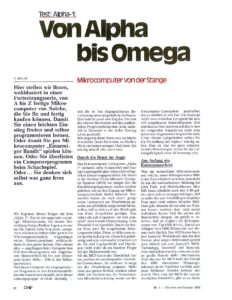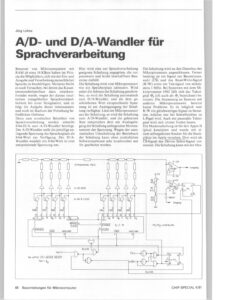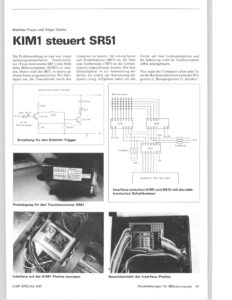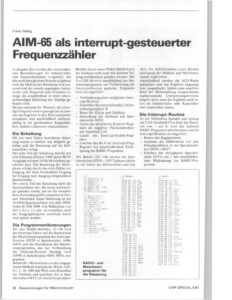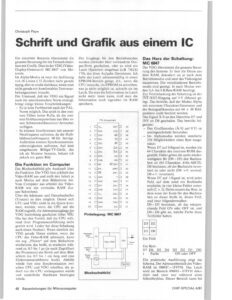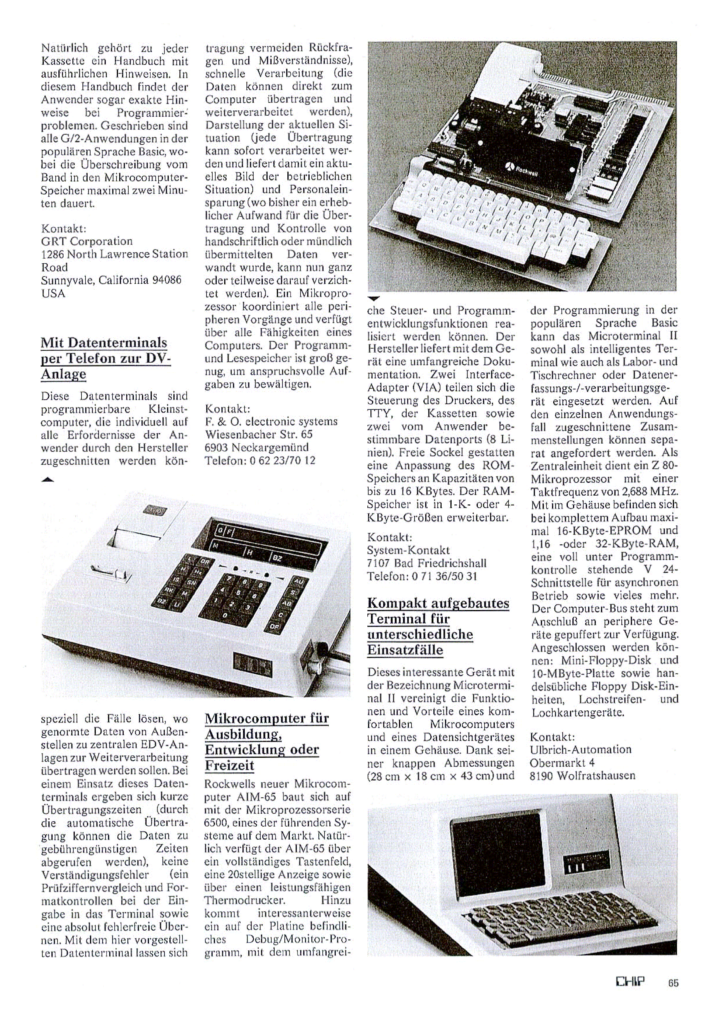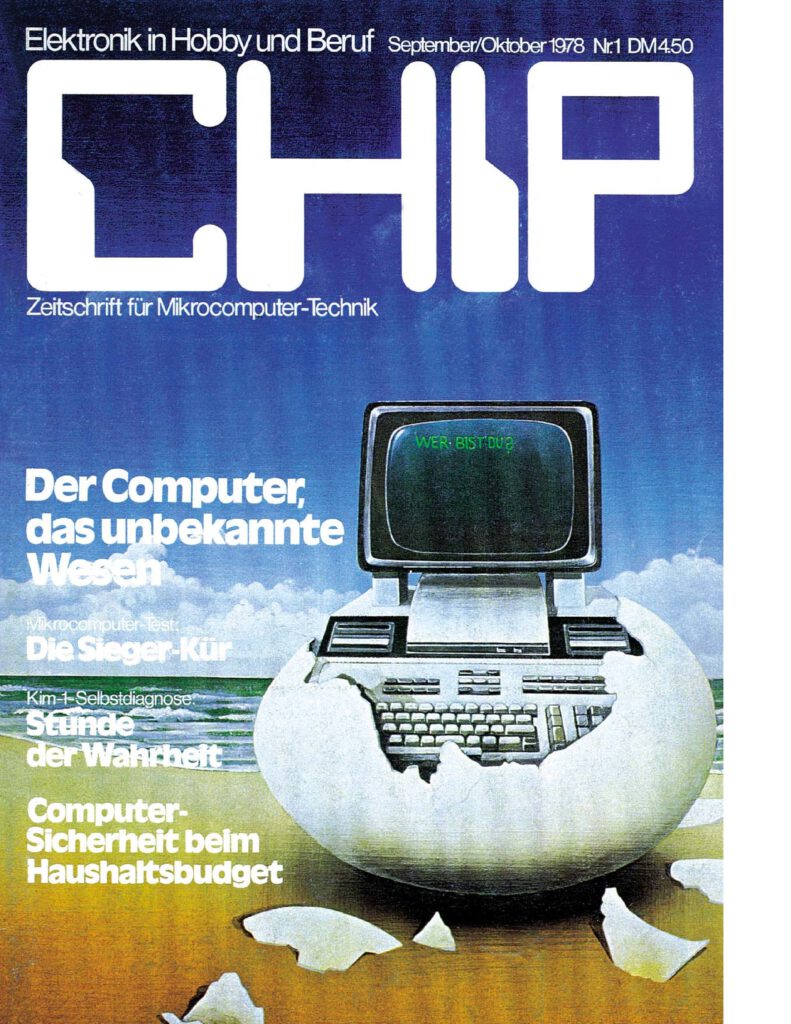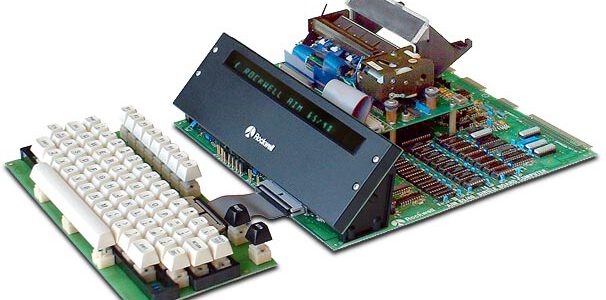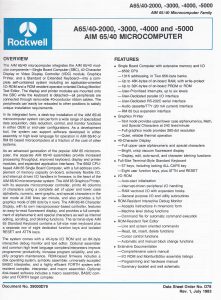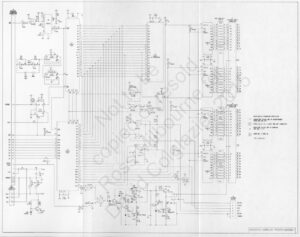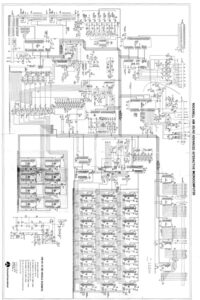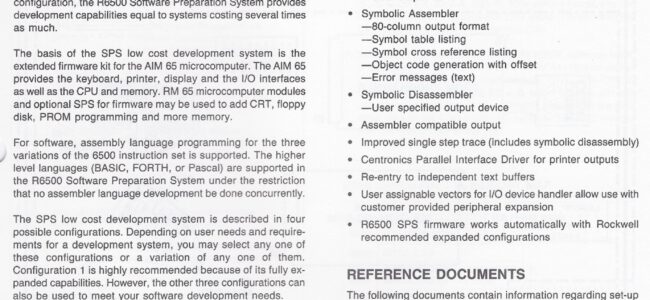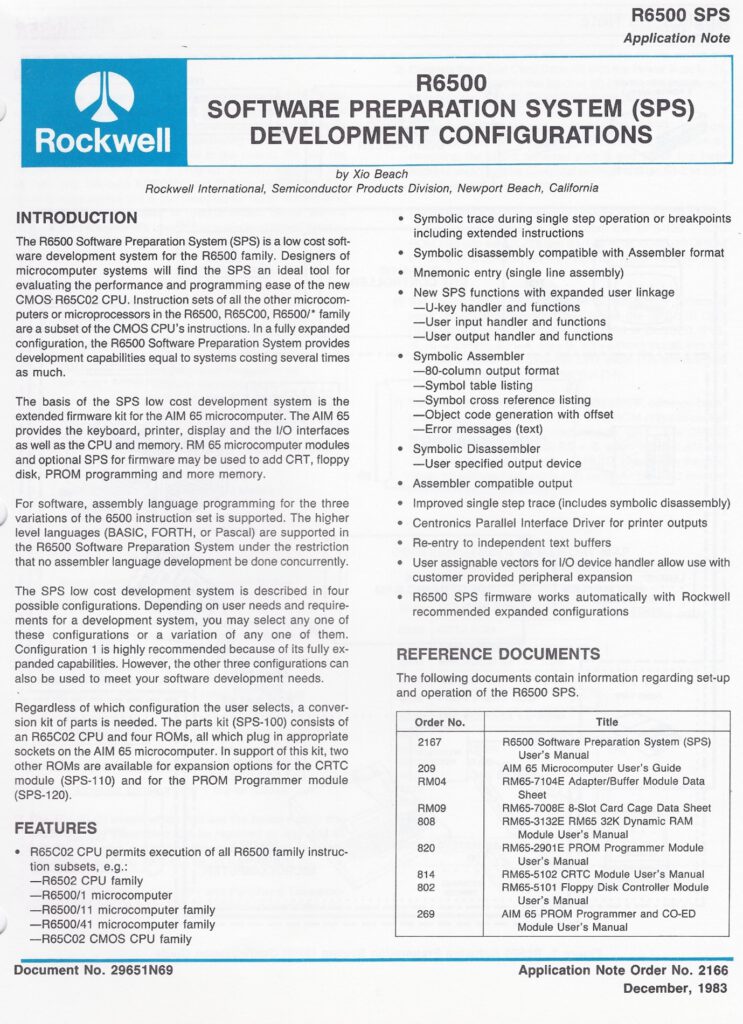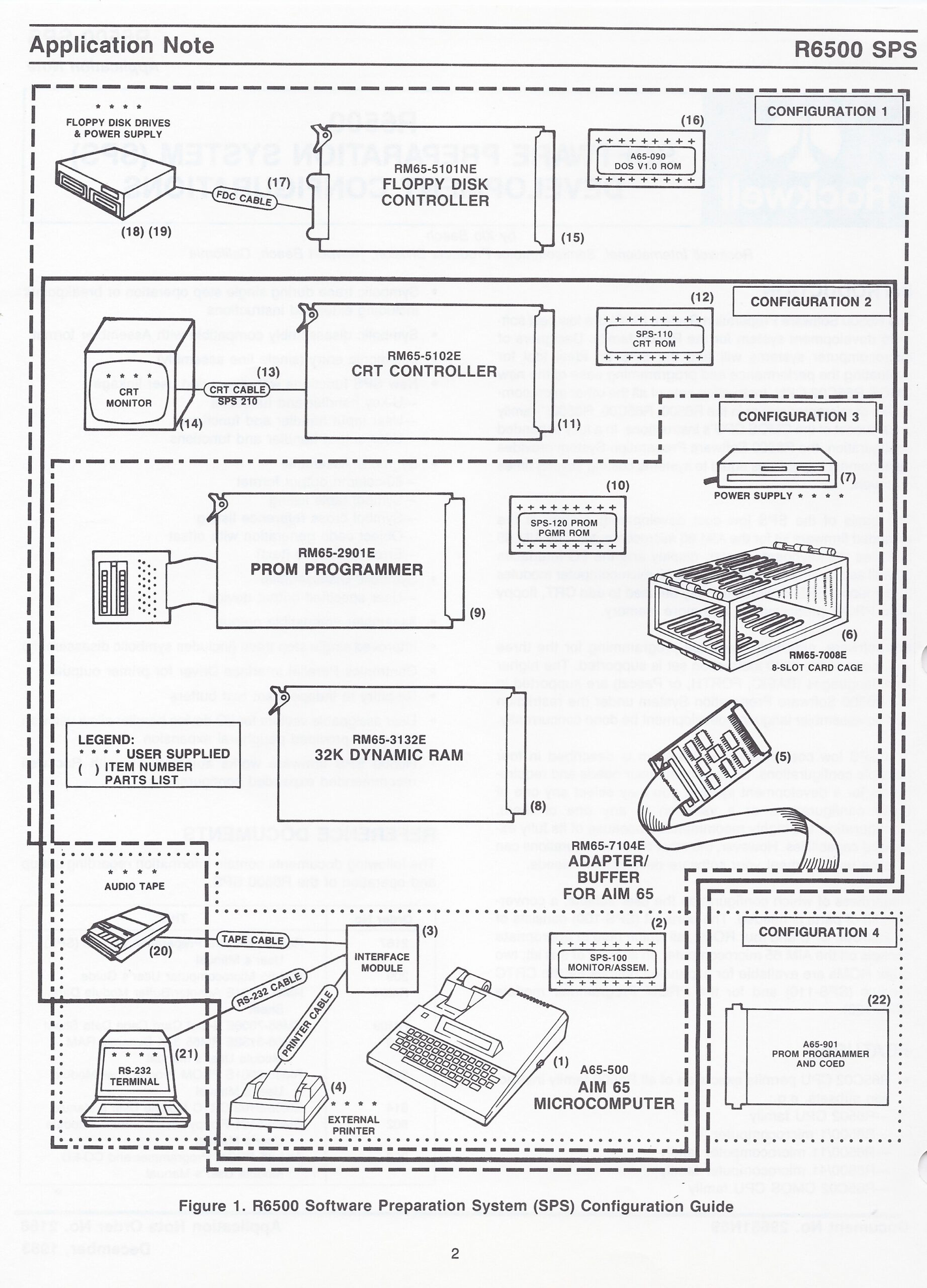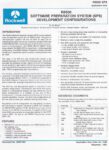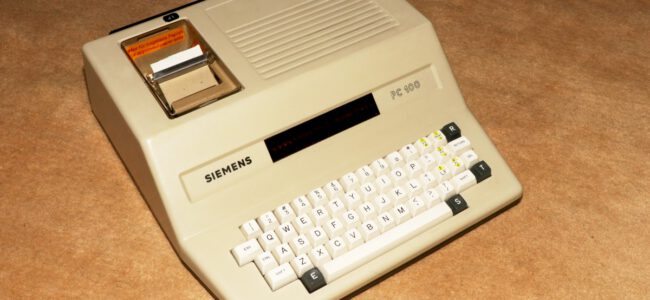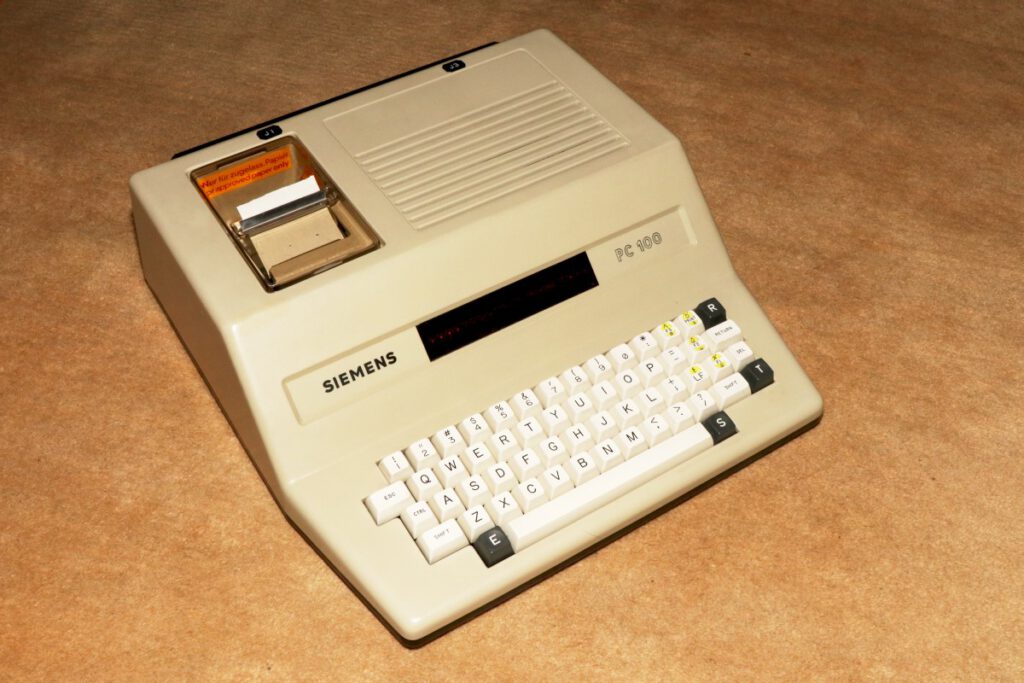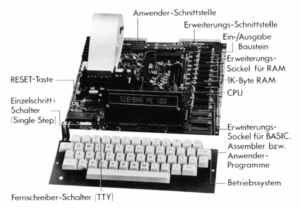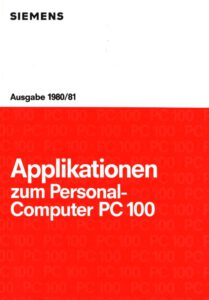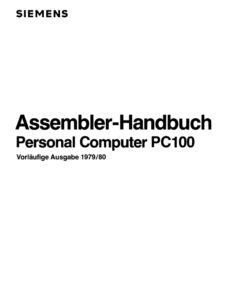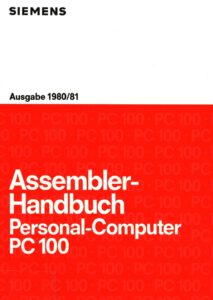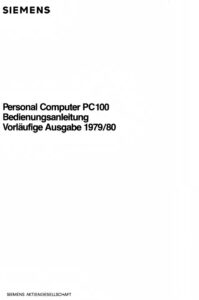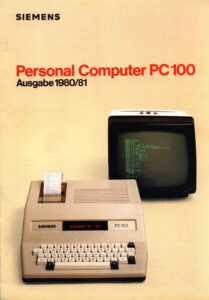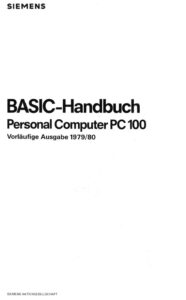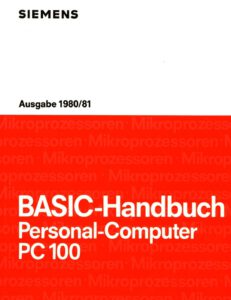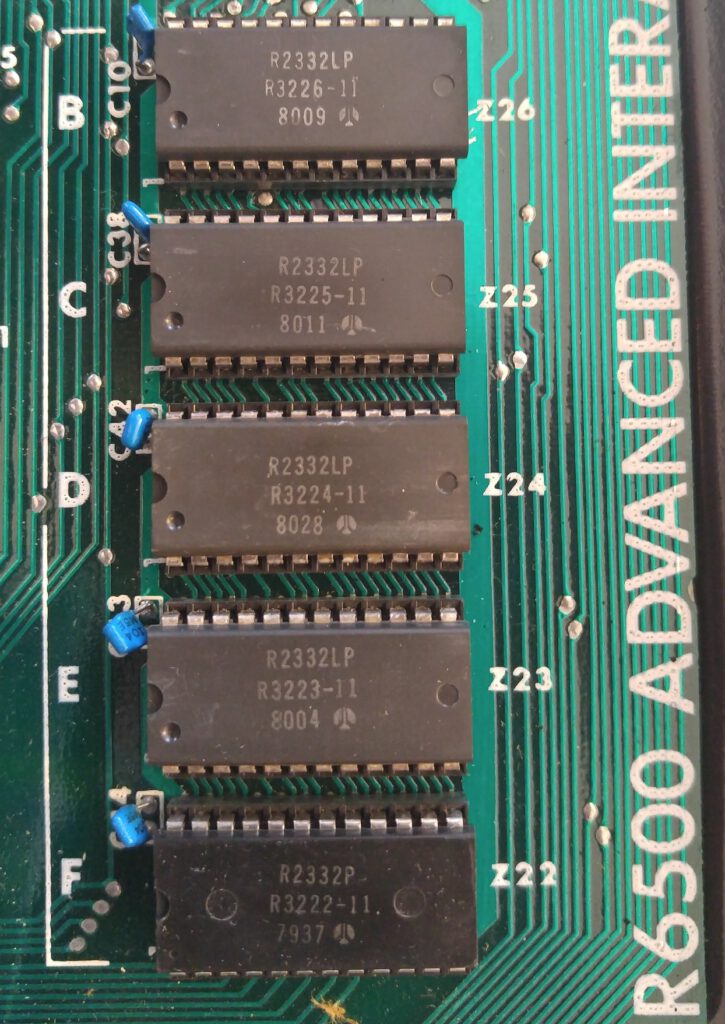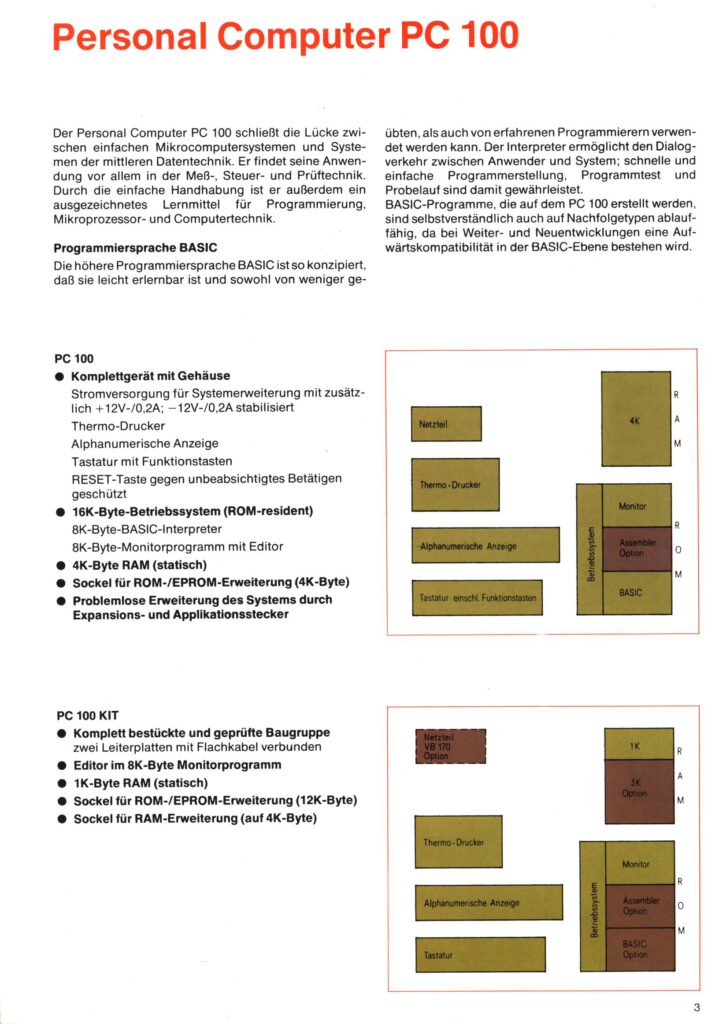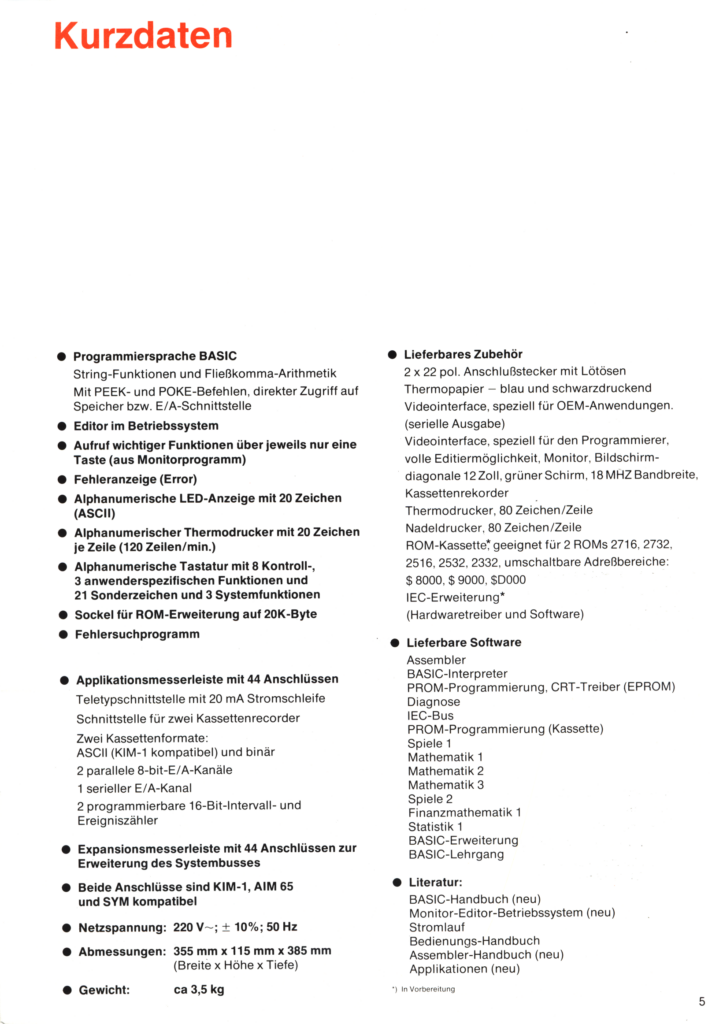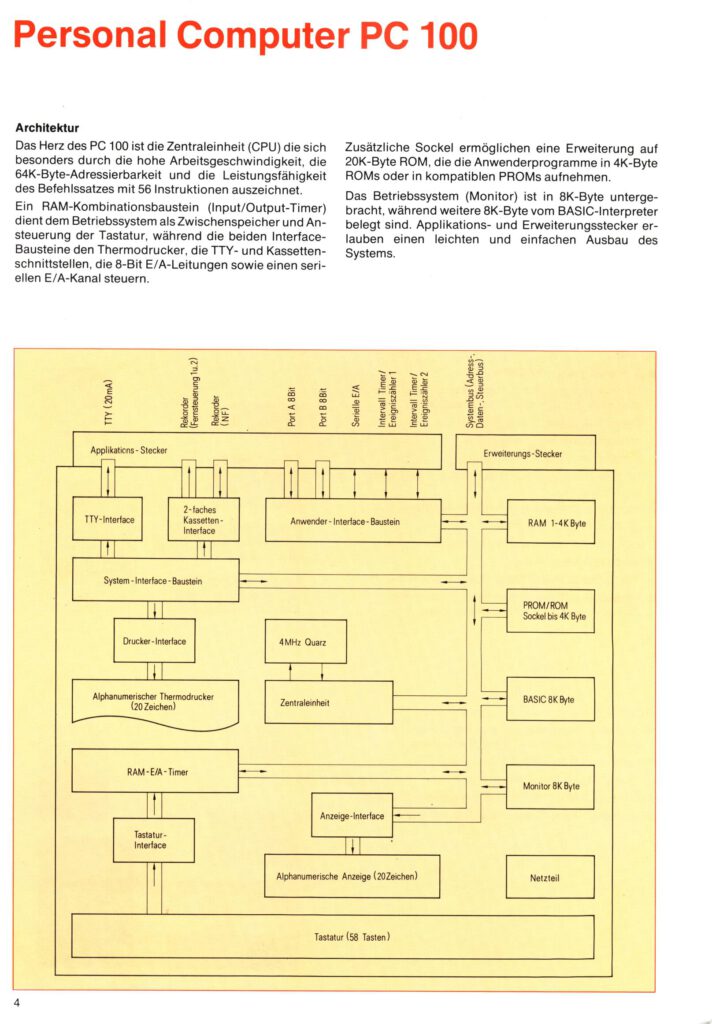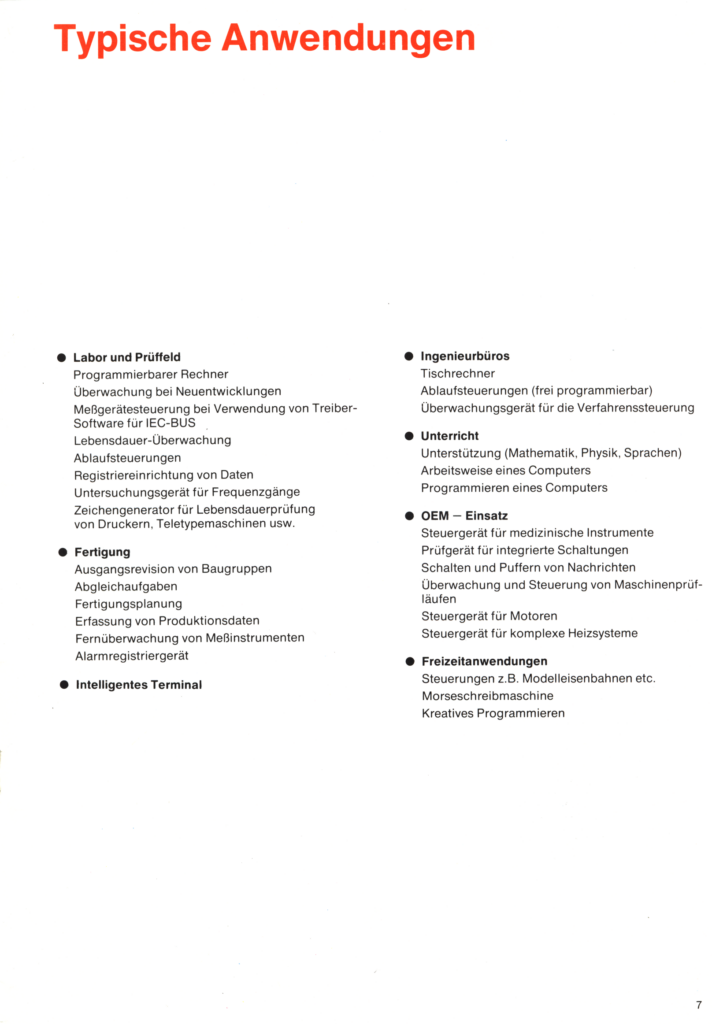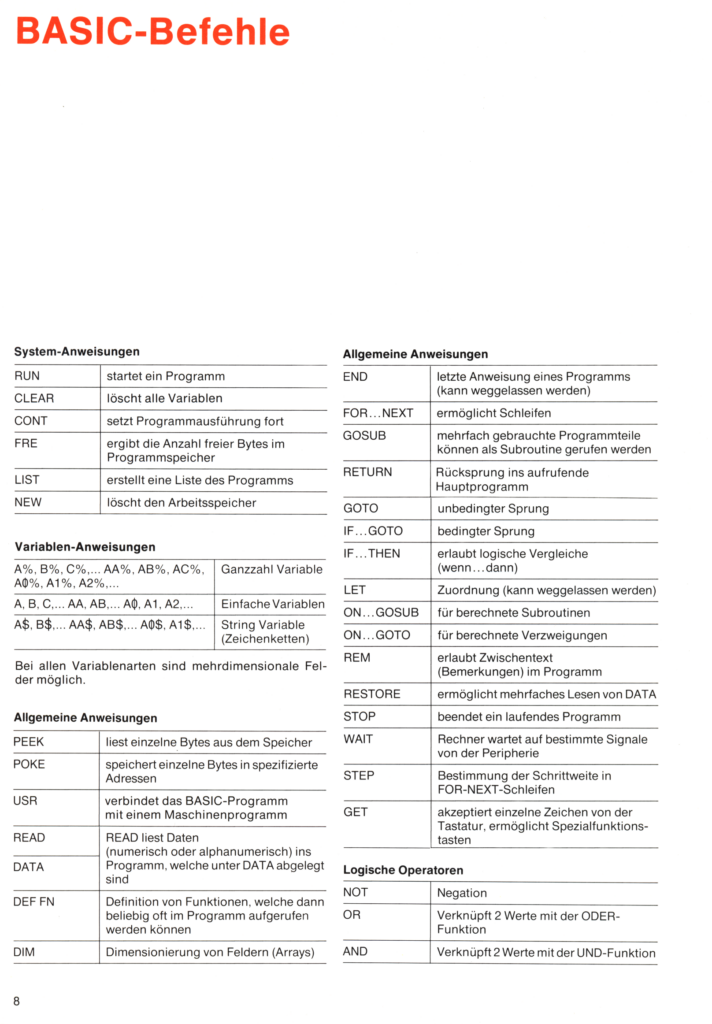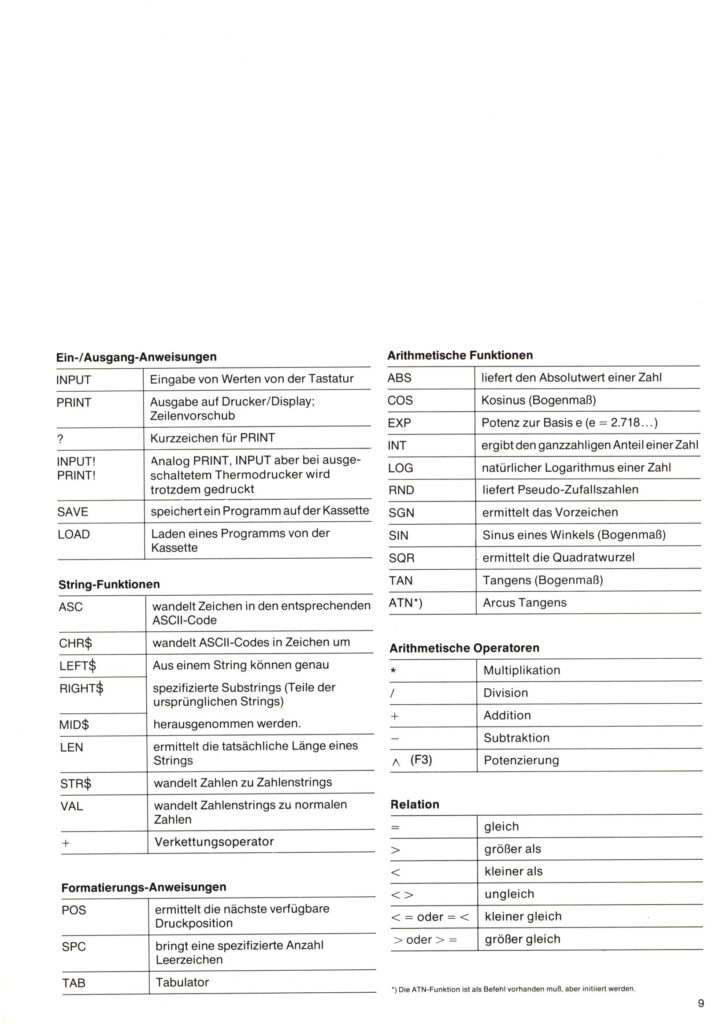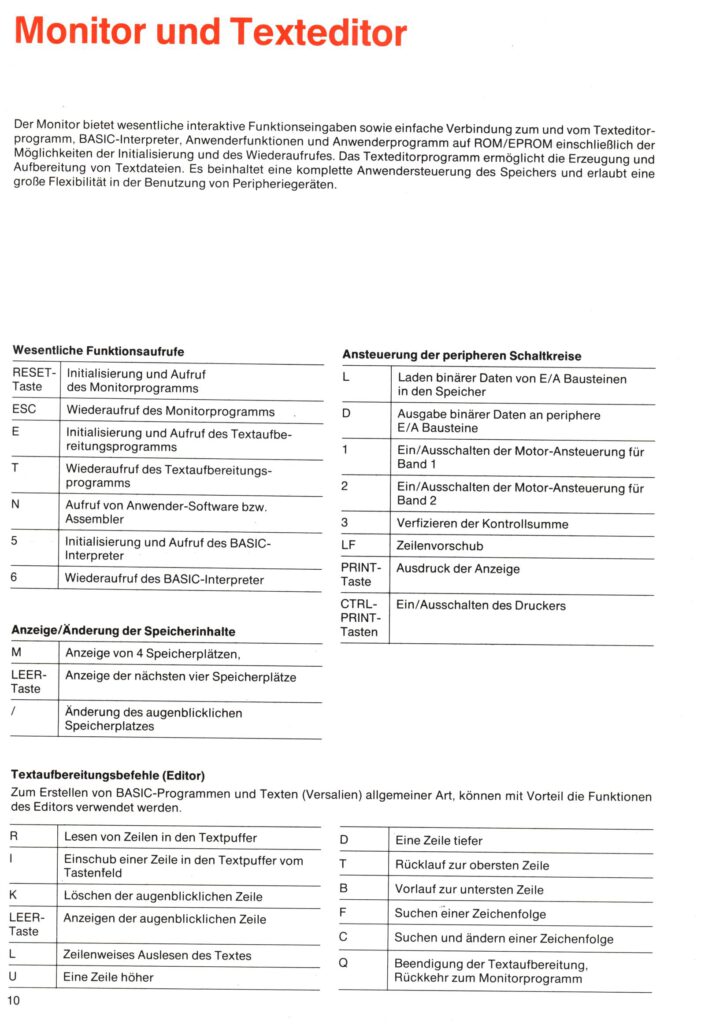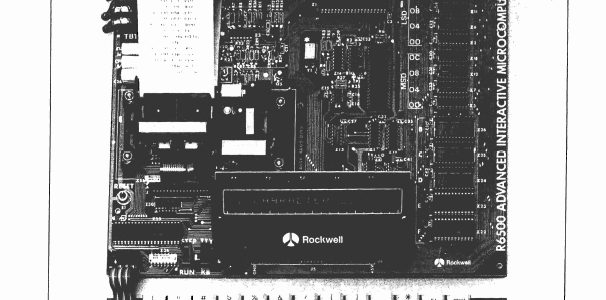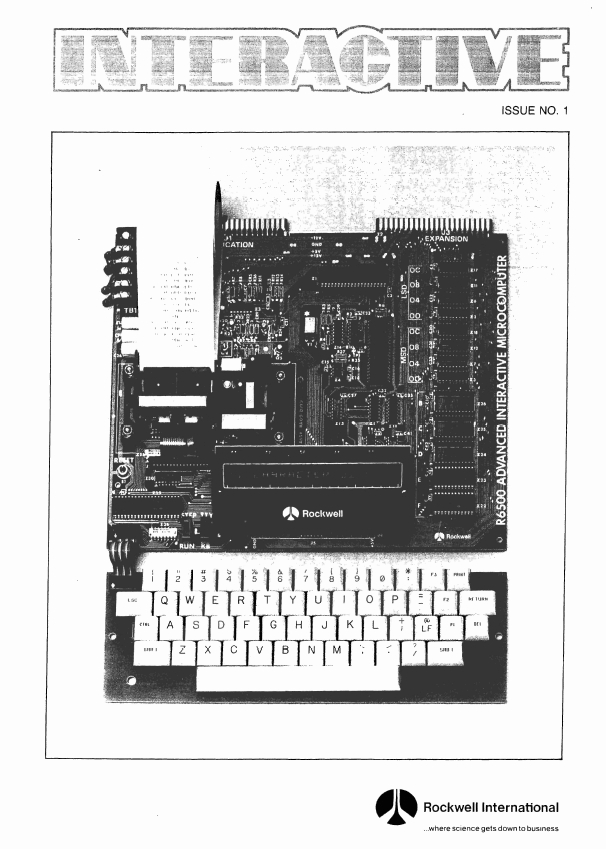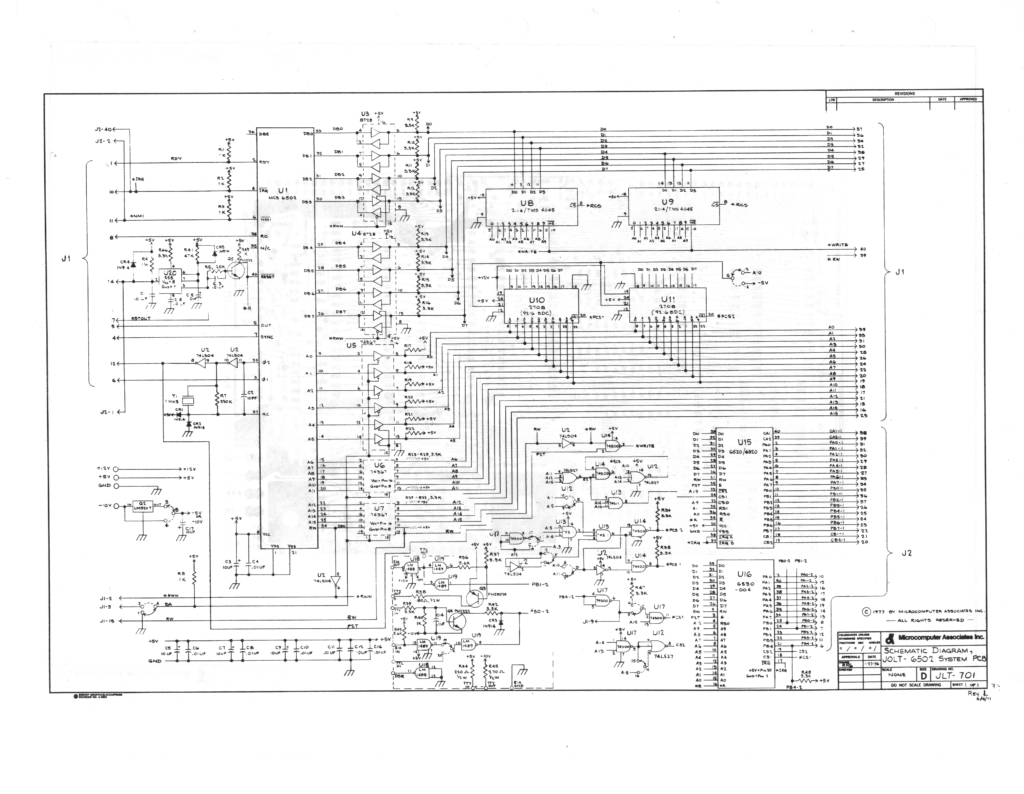The AIM 65/40 is a SBC with the look and feel of the AIM 65, , with a 40 character display (over the 20 of the AIM 65). More memory, more ROM, User prioritized interrupts, RM 65 bus expansion.
(from http://oldcomputers.net/AIM-65-40.html)
AIM = Advanced Interactive Microcomputer.
65= Rockwell 6502 processor.
40= 40 column display.
An upgrade of the original Rockwell AIM-65, this model has a larger display, among other features.
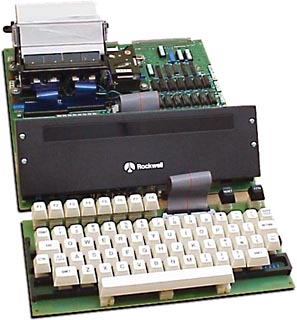
The four edge-card connectors are labeled:
- Parallel
- Serial
- TTY
- Expansion


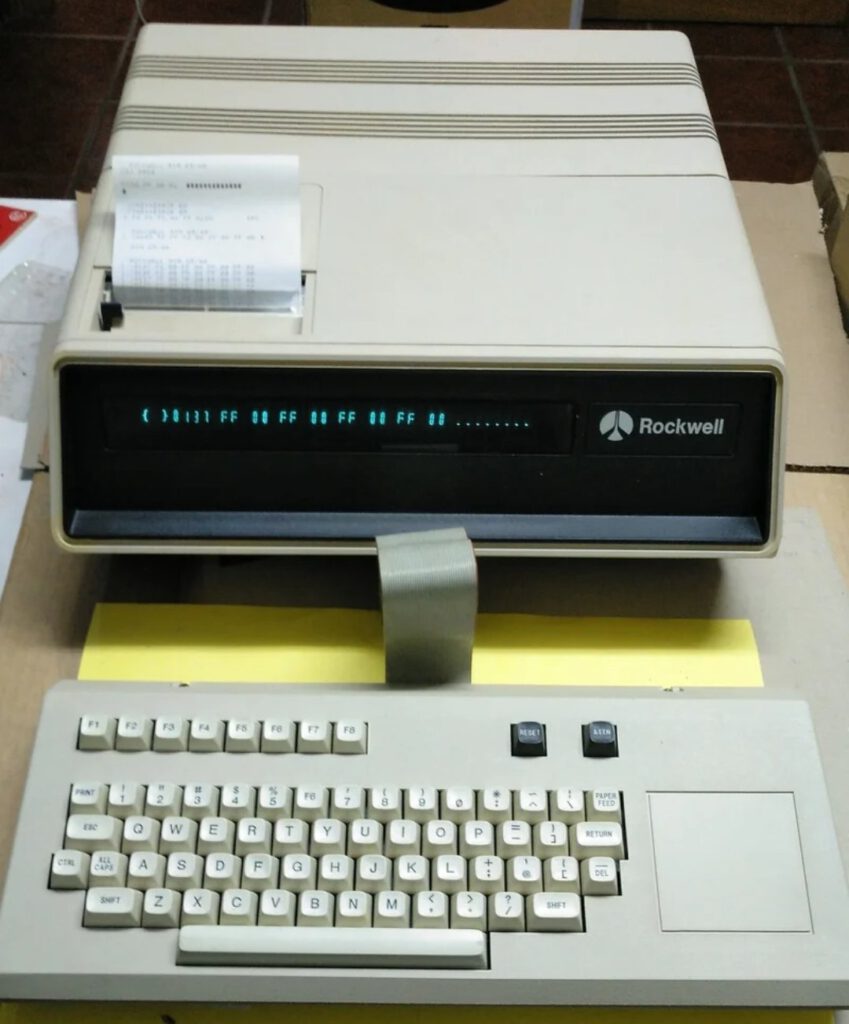
From the Rockwell “Interactive” newsletter, issue no. 5:
Rockwell International will shortly be introducing the AIM 65/40. The AIM 65/40 microcomputer is made up of an R6502 based single board computer with on-board expansion to 65 kilobytes of memory, a full graphics 280 X N dot matrix or 40-column alphanumeric printer, a 40-character alphanumeric display, and a full ASCII keyboard with user assignable function keys.
An advanced generation of Rockwell’s popular AIM 65 microcomputer, the AIM 65/40 will be available as a complete system or as individual computer and intelligent peripheral modules.
The AIM 65/40 Series 1000 single board computer modules feature system address expansion up to 128K bytes with on-board memory up to 48 kilobytes of RAM and up to 32 kilobytes of ROM or EPROM. Six level priority interrupt logic and 16-bit multi-mode timers are included for flexibility in production automation and laboratory control applications. Extensive I/O capability provides an RS-232C asynchronous communications interface channel with programmable data rates of up to 19,200 baud for terminals or modems, plus a 20 ma current loop TTY interface, dual audio cassette interfaces, and two user-definable 8-bit parallel ports with handshake control, two 16-bit timer/counters and an 8-bit serial shift register.
Three additional 8-bit parallel ports are directly programmable as dictated by the user’s application to provide more TTL level I/O or interface to keyboards, displays, and printer modules. Manufacturer supplied ROM resident software included with the AIM 65/40 Series 1000 computer provide I/O drivers for the intelligent peripherals and more. The printer connector is compatible with the Centronics parallel interface that is so popular with high speed dot matrix printers.
A buffered system bus accommodates off-board expansion via Rockwell’s RM 65 microcomputer modules which include intelligent peripheral controllers for mini or standard floppy disks, CRT monitors and the IEEE-488 instrumentation bus, plus additional communications interfaces and a selection of RAM, ROM and EPROM memory expansion options up to 128K bytes of memory and memory-mapped I/O capacity.
The AIM 65/40 Model 0600 graphics printer module consists of an intelligent microprocessor controller integrated with the printer mechanism. The module operates in two modes. Character mode operation prints upper and lower case ASCII character font formatted as 40-characters/line at 240 lines/minute. Full graphics mode outputs any data pattern desired as a 280 X N dot matrix. With its own microprocessor controller, user changeable character generator ROM, thermal head drivers, motor control, and parallel handshake ASCII interface, this freestanding peripheral minimizes demand on the AIM 65/40 central processor, permitting maximum system performance.
The Model 0400 display module features a bright, crisp vacuum fluorescent 40-character alphanumeric display. This stand-alone module has its own microprocessor controller for display of alphanumeric, special, and limited graphics characters, parallel handshake ASCII interface, support circuitry and operates from a single +5 volt power supply. Special control commands permit variable display timing, cursor control, auto-scroll, and character blinking.
The Module 0200 keyboard module provides a terminal style alphanumeric and special character keyboard matrix with 64 keys, including locking ALL CAPS, control, and eight user definable function keys. Three keys labeled ATTN, RESET, and PAPER FEED have dedicated lines to the interface connector.
The AIM 65/40 Series 5000 incorporates a ROM resident software system and integrates all four modules into a complete microcomputer system. The interactive monitor software controls the AIM 65/40 system with single keystroke, self-prompting commands, supports software development with assembler, debug and control commands. A multi-file text editor supports both line and screen editing functions. Optional languages include a fully symbolic R6500 assembler and BASIC. FORTH, PASCAL, and PL/65 software packages are in development.
The AIM 65/40 is expected to be available sometime during the third quarter of 1981.
The following photos and files are given to me by Jörg, Ross Milbourne and David Colglazier, thanks!

ROMs
R14B2-11_8_25.bin
R32T3-12_9_22.bin
R32U4-11_1_10.bin
R32U5-11_9_4.bin
R32U6-11_8_25.bin
